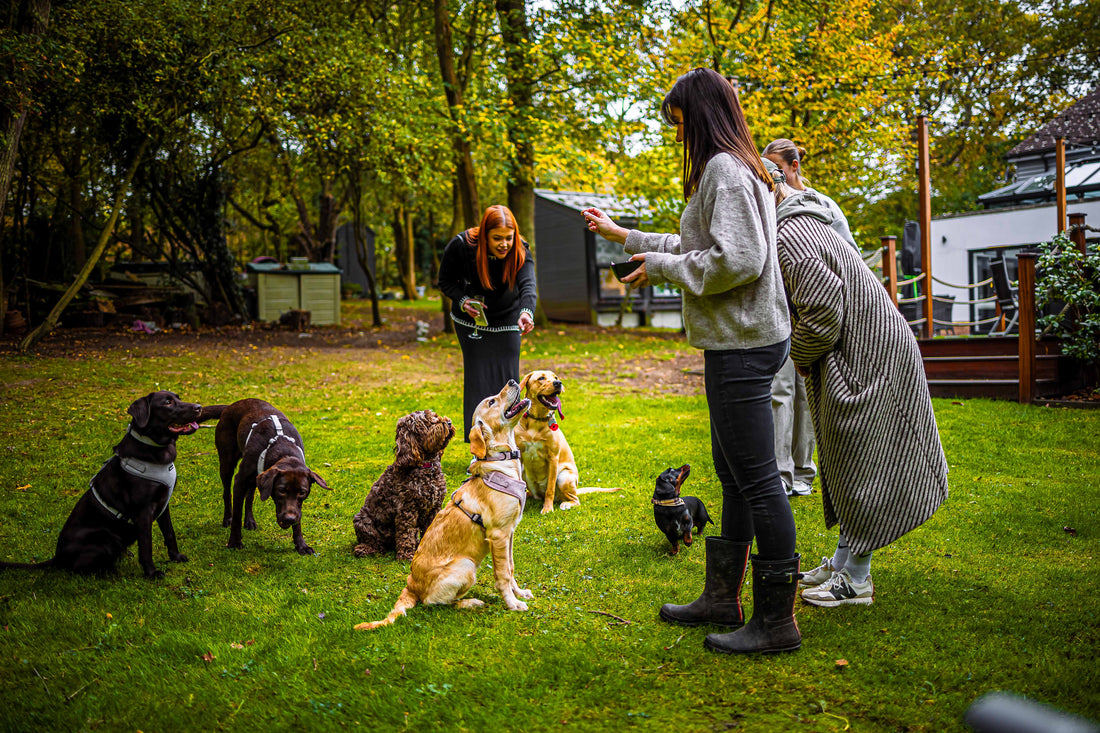
Tips for Keeping Your Dog Safe During Walks in the UK
Walks are often the highlight of your dog’s day — and for many owners too! But while they’re a great way to explore, exercise and bond, they do come with a few risks.
With a little extra care and attention, you can make every walk safe, enjoyable and stress-free for you and your dog. Here’s what every dog parent should know before heading out.
Choose the Right Lead and Harness
First things first: make sure your dog’s lead, harness and collar are fit for purpose.
A secure, well-fitting harness gives you better control without putting pressure on your dog’s neck.
Leads should be sturdy and suited to the environment — for example, a strong dog walking lead is ideal for busy streets, while a long-line lead works better for open parks.
Top tip: Always check your dog’s gear before heading out. If the stitching looks worn or the clip is loose, it’s time for a replacement.
Keep Your Dog Visible
In the UK, low light conditions are common, even during daytime walks. Rainy days, early evenings and foggy mornings can all make it harder for drivers, cyclists and other walkers to spot your dog.
To help your pup stay seen:
- Use reflective harnesses, collars or leads
- Attach a light-up tag to their collar
- Wear bright colours yourself
Staying visible is one of the simplest ways to stay safe, especially near roads.
Stick to Safe Walking Routes
Where you walk matters. Try to stick to pavements, parks and dog-friendly trails where possible.
In rural areas, keep an eye out for fields with livestock — it’s a legal requirement in the UK to keep your dog on a lead around farm animals. Even the calmest dog can get excited by the sight of sheep or cows.
If you love exploring new places with your dog, you might also enjoy our dog walking accessories collection — perfect for keeping walks organised and stress-free.
Watch the Weather
British weather can be unpredictable at the best of times. Hot pavements in summer, icy paths in winter, and sudden rain showers can all pose risks.
- In summer: Walk early morning or evening to avoid overheating. Carry water for your dog and stick to shaded areas.
- In winter: Shorten walks during freezing weather and watch for salted pavements, which can irritate paws.
Always trust your instincts. If the weather’s turning rough, it’s better to have a shorter walk than to risk discomfort or injury.
Train Good Recall (Even on a Lead)
Even if your dog is always on a lead, good recall skills are essential. If your dog pulls away, drops a lead or somehow slips free, you want them to respond quickly when you call.
Practice calling your dog back to you in safe spaces and rewarding them generously. It’s one of the best ways to protect them if the unexpected happens.
Carry Essentials
Before heading out, double-check you’ve packed the basics:
- Poo bags
- Fresh water
- Treats
- Mobile phone
- ID tag (it’s a legal requirement for dogs to wear one in public spaces)
A small, practical dog walking bag can help you keep everything you need to hand.
Be Mindful of Other Dogs and People
Not every dog is friendly, and not every person wants to say hello.
Always ask before letting your dog approach another dog and be prepared to calmly walk away if needed.
Keeping a polite distance can help avoid misunderstandings and keep walks peaceful for everyone.
